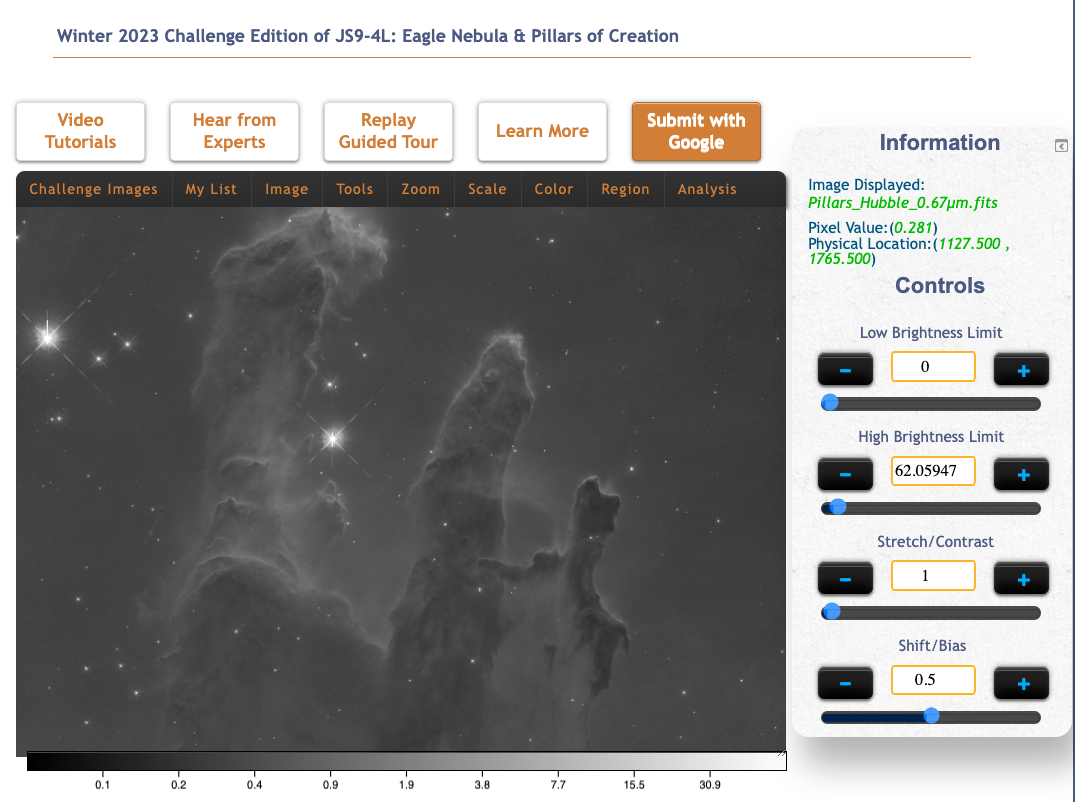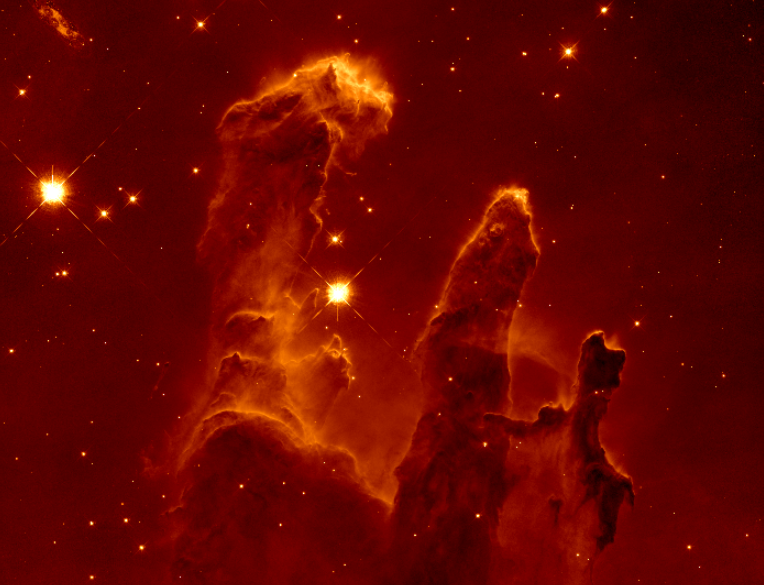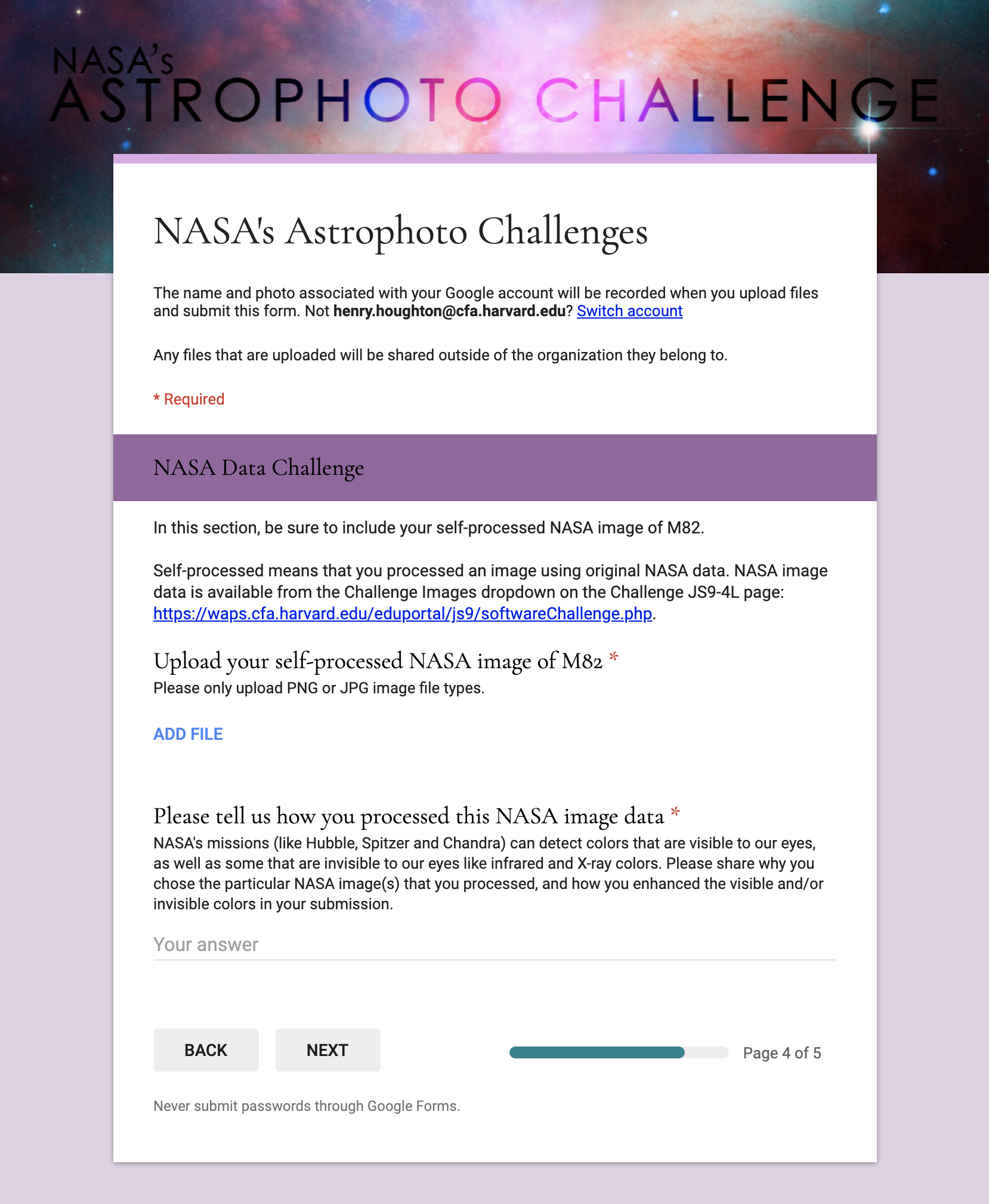Stay tuned for the Standout Entries!
-
Use NASA data, or your own, to create amazing images
What To Do
Follow the instructions below for each of the three steps. First you will gather your own real-time telescope image, then you'll create your own image using the JS9-4L image-processing tool, and finally you'll submit your processed image to NASA's Astrophoto Challenge.
Step 1: Get Your Image(s)
Get images for the Challenge either by using NASA data provided for you in the Challenge Tool or request your OWN images using the MicroObservatory Telescopes.
Option A: Get NASA images using the Challenge Edition of the JS9-4L image tool.
- Open the Challenge Images dropdown in the JS9-4L navigation bar.
- Choose from any of the professional astronomical images of in the Challenge Images list.
-OR-
Option B: Use a real telescope to request your OWN images from MicroObservatory.
- Find Andromeda, and then click the Observe button below it, fill out the fields, and then submit your image request.
- Your image will be captured tonight by a MicroObservatory telescope, and emailed to you tomorrow from microobservatorysupport@cfa.harvard.edu.
- Download your image to your device. Then open it in the Challenge Edition of JS9-4L using the Image dropdown.

Step 2: Create Your Image
- You should see your image of open in the JS9-4L image processor.
- Use the tools included with the JS9-4L processor to enhance your image. Get creative!
- When you're done, save your image to your device as either a JPEG or PNG file.


Video Tutorials
Find other useful tutorials on the Tools & Training page.
Step 3: Submit Your Image
-
In order to enter NASA's Astrophoto Challenge,
you will need:
- • Your self-processed image of
- • A written description of how you processed your image
- Submit your processed images to NASA's Astrophoto Challenge.

Google Form
Hear From Experts
Expert astronomers take a close look at Andromeda and Cartwheel to explore what they are, where you can find them in the night sky, and what different wavelengths reveal. The two experts we meet in this video are Osase Omoruyi, and Phil Appleton.
FAQ
Who can participate? ▾
Anyone!
You just need an email address to receive any images
you take with the MicroObservatory robotic
telescopes.
If you are 12 or younger, you will need to have
your parent/guardian do this activity with
you.
What do I do? ▾
Find detailed instructions to participate above.
Are you new to MicroObservatory? Check out all the tutorials available on the Tools & Training page.
How do I submit my images? ▾
You will need a Google email to submit your images here to enter the NASA's Astrophoto Challenge.
What happens with my entry? ▾
The MicroObservatory Team and NASA's Universe of Learning will review all of the submissions, and highlight entries that demonstrate compelling and creative image-processing techniques.
Standout entries will be recognized on the Standout Entires page. Every standout entry will receive expert feedback from NASA scientists!
When did this season end?
The season started on .
The season ended on .
We are reviewing all submissions to NASA's Astrophoto Challenges, and will post highlights to the Standout Entries page.
Follow our Facebook page to get updates whenever standout entries are posted.
What about past seasons?
You can still work with NASA data from past Challenges! Head to the Challenges Archive of JS9-4L, where you will find NASA image files among the Archived Images for all of the past seasons.
Want to see what others have done with image data? Check out highlighted entries from past Challenges on the Standout Entries page.





